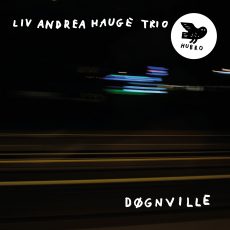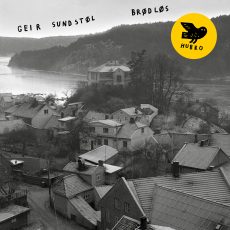Led by Sissel Vera Pettersen, the eleven female singers combine in rich and varied ensemble effects, from choral polyphony to extended-vocal techniques that recall Cathy Berberian interpreting Luciano Berio, or the expressive use of voices by Norway’s Arne Nordheim. Throughout, the intense focus of the music, with the sequence of pieces alternating between compositions by Sten and by Storlokken, helps to cast a powerful cumulative spell. Dark, ritualistic chants are mixed with whoops, wails, and ecstatic ululations, while the acoustic purity of the unaccompanied voices is brought into sharp relief by very sparing use of subtle electronic enhancement and rhythmic percussion. Recorded with perfect clarity by Jo Ranheim at Ora Studio, and mixed and produced by Helge Sten and Ståle Storlokken, the result is a work of great beauty and meditative power.
Originating in a 2018 commission for Sten and Storlokken to compose for Trondheim Voices, ‘Folklore’ has more to do with the present than the non-specific historical past so often associated with ‘folk’ forms. Like Ari Astar’s hallucinogenic folk-horror film ‘Midsummar’ from 2019, there’s an abiding concern with ritual and magic, evident in song titles such as ‘Chant For The Multipresence’, ‘Facing the Outerworld’ and ‘All Stand, Head Erect, Eyes Open’, and the emphatic, wordless intonation of the ensemble.
“The overall idea was to base the full piece around the concept and scope of folkloristic traditions”, says Helge Sten, who composed seven of the thirteen songs as well as co-producing with Ståle Storlokken. “I think this helped us to find a common platform that would support our different approaches to composing music, and thus consolidate the various parts into one unified piece. Folklore traditions often point towards an abstract, esoteric, and mental landscape, which opens up a wide scope for composing music. The initial idea was to work heavily with digital sound processing technology, focusing on the human voice, but before we started work an almost opposite idea started to take shape: being composers and performers using technology extensively, it seemed more intriguing to explore ideas in the direction of crude and primitive folk traditions, where the human voice has always been central in language and music. These traditions often connect nature, society, rituals, and the esoteric into powerful imagery that’s often lacking in today’s technology-driven society.”
Referencing the work of the influential Cornish artist and writer Ithell Colquhoun (1906-1988) and the great contemporary German film-maker Werner Herzog, Helge Sten feels that the use of folklore does not restrict experimental artists to the world of the past. “It is very much a reflection of current and future mysteries that we in many ways choose to ignore, much in the same way we choose to ignore the powerful tools brought to us by esoteric folkloristic traditions”, he says. “The compositions on the album are not derived from folk themes, even though it seems unavoidable to explore these ideas without some reference to folk music and culture. We also worked extensively with quarter-tones throughout, which is closer to the world of folk music than the chromatic twelve note scale, as well as using a set of microtonal handbells. Another interesting aspect of choosing the folkloristic traditions as a base for our work was that it slowly reintroduced some of the technology we initially rejected and helped to make the overall piece much more integrated than we had anticipated.”








